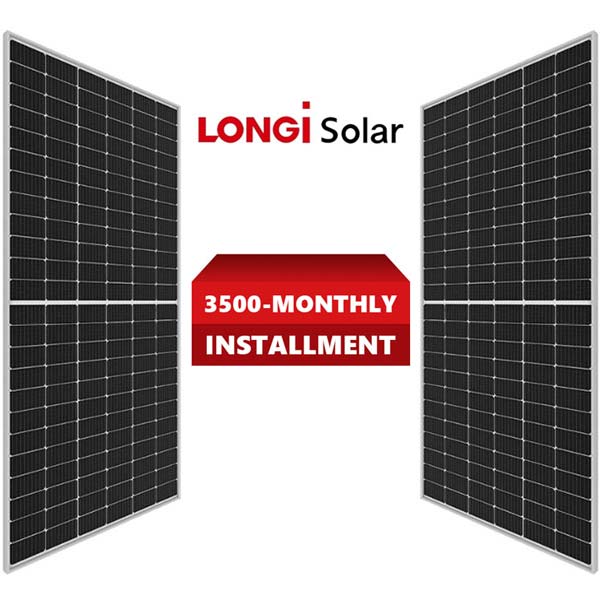Monocrystalline Longi solar panels, made from a single crystal structure, tend to have higher efficiency compared to polycrystalline solar panels, which are composed of multiple crystal structures. As of my knowledge cutoff in September 2021, the average efficiency range for monocrystalline solar panels is around 15% to 22%, while polycrystalline solar panels Hi-Mo5 550w typically have an efficiency range of 13% to 18%. These values can vary depending on the specific manufacturer and technological advancements.
It's worth noting that there are also other types of Longi solar panels, such as thin-film solar panels, which generally have lower efficiencies compared to crystalline silicon panels. However, thin-film technology offers other advantages such as flexibility and lower production costs.
However, in real-world conditions, Longi solar panel output can vary significantly. Factors such as the angle and orientation of the panel, temperature, shading, and so on can impact the actual output. On average, a well-designed and properly installed solar panel system can generate around 15% to 25% of its maximum power rating on an annual basis. This estimate takes into account factors such as regional solar resources, system losses, and other practical considerations.
It's important to note that solar panel Hi-Mo5 550w output can also vary throughout the day and across seasons due to the changing position of the sun and variations in solar irradiance.
Synchronization with the Grid: Once the DC electricity is converted into AC electricity, the inverter synchronizes the AC output with the electrical grid's frequency and voltage levels. This synchronization is crucial to ensure that the Longi solar energy seamlessly integrates with the existing power supply.
Power Distribution: The AC electricity generated by the inverter is then distributed throughout the building's electrical system. It can power various appliances, lighting, and other electrical loads directly, reducing or even eliminating the need for energy from the grid.
For example, a common residential solar panel might have a maximum power rating of 300 watts (0.3 kW) under STC. This means that, under the ideal test conditions, that particular panel can generate a maximum of 300 watts of electrical power.

 Longi 340w
Longi 340w